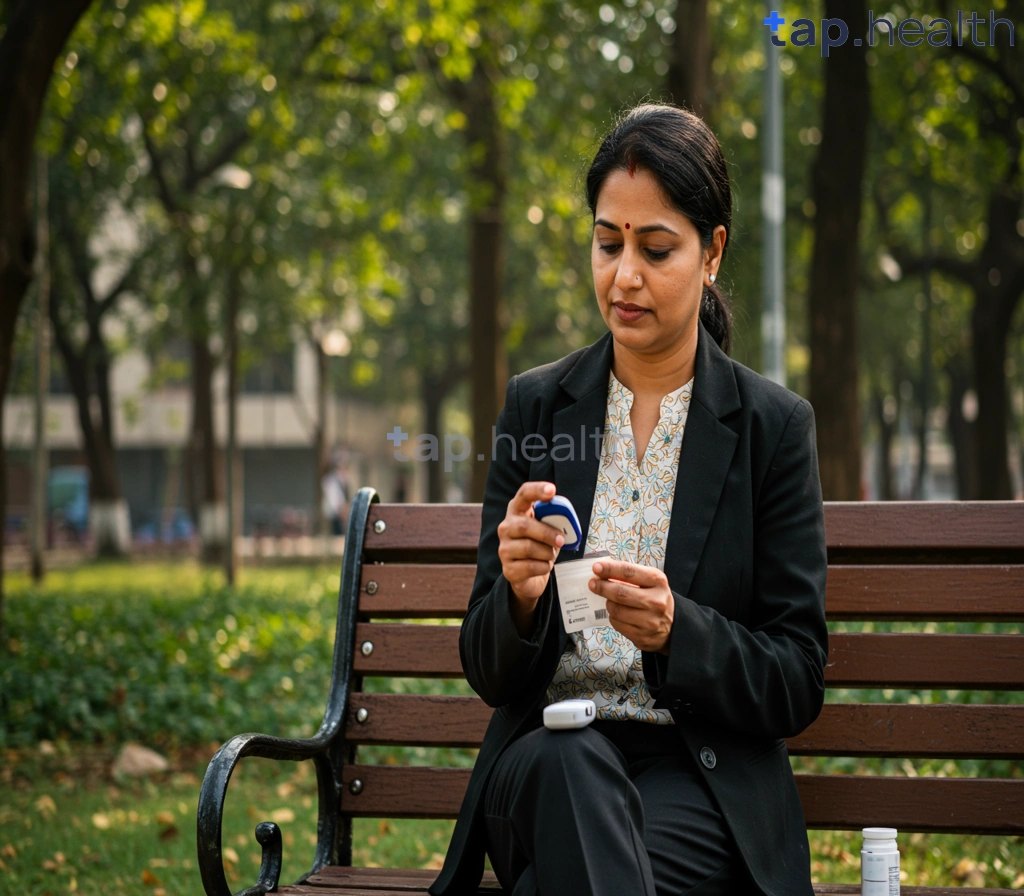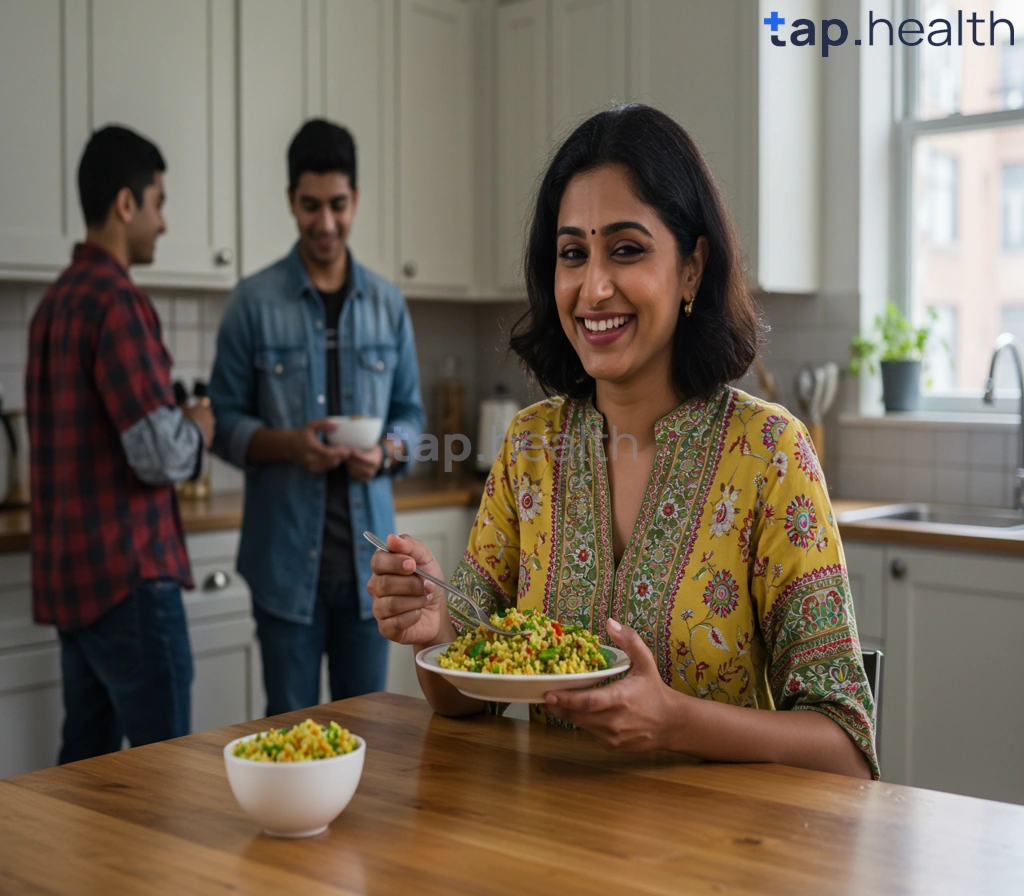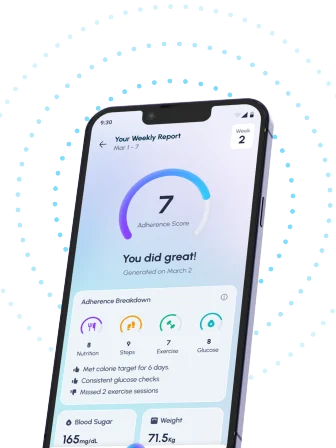Table of Contents
- Understanding and Preventing Low Blood Sugar
- Hypoglycemia: Recognizing the Symptoms and When to Seek Help
- Effective Strategies to Manage Your Blood Sugar Levels
- Quick Guide: Food Choices to Prevent Low Blood Sugar
- Maintaining Stable Blood Sugar: A Holistic Approach
- Frequently Asked Questions
- References
Living with diabetes can feel like navigating a constant balancing act, and one of the trickiest aspects is managing low blood sugar. Experiencing hypoglycemia can be frightening and disruptive, impacting your daily life and potentially leading to serious health consequences. This comprehensive guide, “Managing Low Blood Sugar: A Guide for Diabetics,” is designed to empower you with the knowledge and strategies you need to effectively prevent and treat hypoglycemic episodes. We’ll explore practical tips, helpful resources, and answer your burning questions about recognizing the symptoms, understanding your risk factors, and taking control of your blood sugar levels. Let’s work together to keep you feeling your best.
Understanding and Preventing Low Blood Sugar
Low blood sugar, or hypoglycemia, is a serious concern, especially for people with diabetes living in hot, humid climates like those common across India and other tropical regions. While a blood sugar level under 140 mg/dL is generally considered normal, significantly lower levels can be dangerous for diabetics. Think of it like this: heat and humidity drain your body’s fluids, making it harder to regulate blood sugar—it’s like trying to bake a cake with a constantly fluctuating oven temperature! This dehydration increases the risk of hypoglycemic episodes.
Recognizing the Signs
The warning signs of low blood sugar can vary, but common ones include shakiness, sweating, dizziness, confusion, and a racing heart. In tropical climates, these symptoms are often amplified by heat stress. Imagine feeling already drained from the heat, and then experiencing these symptoms – it can be quite alarming. Being extra aware in hot weather or after strenuous activity is vital. Early detection is key; a dangerously low blood sugar reading needs immediate attention. For more information on what constitutes a dangerously low level, you might find this article helpful: Is a 50 Sugar Level Normal? Understanding Low Blood Sugar.
Prevention Strategies
Preventing low blood sugar involves proactive steps. Regular blood sugar monitoring is essential – it’s your personal blood sugar weather report! Maintaining a consistent carbohydrate intake, avoiding long periods without food, and eating regular meals and snacks, particularly in hot weather, are crucial. Carrying glucose tablets or a similar fast-acting sugar source can be a lifesaver if low blood sugar strikes. A personalized plan from your doctor or diabetologist is key. Remember to stay super hydrated – this is even more important in hot, humid conditions to combat the dehydrating effects and help keep your blood sugar stable. For more tips on maintaining healthy blood sugar levels, check out this helpful guide: How to Maintain Healthy Blood Sugar Levels.
Seeking Regional Support
Access to reliable healthcare and diabetes support groups is essential, particularly in India and similar tropical areas. Connecting with local organizations provides valuable resources, education, and a supportive community. Managing diabetes effectively in warmer climates is an ongoing journey – don’t hesitate to seek help. You’re not alone!
Hypoglycemia: Recognizing the Symptoms and When to Seek Help
Understanding Low Blood Sugar in Tropical Climates
Managing diabetes in hot, humid climates like those across India is a real challenge. The risk of hypoglycemia – dangerously low blood sugar – is significantly higher. Many diabetics struggle to keep their HbA1c levels (a key indicator of blood sugar control) below 9%, and studies show that’s true for over 30% of patients. Knowing the signs and seeking help quickly is absolutely vital.
Recognizing the Warning Signs
The symptoms of hypoglycemia can sneak up on you. You might feel shaky, sweaty, dizzy, confused, or your heart might race. The heat and humidity can worsen these feelings or even mask them, making it harder to spot the problem early. Dehydration, common in tropical regions, makes things even trickier. Pay close attention to any sudden changes – in your mood, how you’re behaving, or even just how your body feels. Imagine feeling a little off, then suddenly experiencing intense dizziness – that might be your body screaming “low blood sugar!”
Seeking Timely Medical Assistance
If you suspect low blood sugar, immediately check your levels with a glucometer. If it’s dangerously low (usually under 70 mg/dL), quickly consume fast-acting carbs like glucose tablets or fruit juice. But equally important: seek medical help straight away, especially if symptoms persist or you’re unsure what to do. Access to healthcare can be a hurdle in some tropical areas, so having a plan – a pre-arranged contact with a doctor or diabetes specialist – is smart. And remember, managing high blood sugar is just as crucial; for more on that, check out this helpful resource: 750 Blood Sugar Alert: Critical Risks, Warning Signs.
Prevention and Management in Tropical Regions
Keeping your blood sugar steady is key to avoiding hypoglycemic episodes. This involves carefully following your prescribed diet, taking medication as directed, and regularly monitoring your blood sugar levels. Remember the heat and humidity – stay hydrated! Dehydration can mess with your blood sugar. Regular check-ups are non-negotiable for managing diabetes effectively and preventing serious complications. For more on managing those pesky morning blood sugar spikes, which can contribute to hypoglycemia, read this: Why Blood Sugar Spikes in the Morning and How to Manage Them.
Effective Strategies to Manage Your Blood Sugar Levels
Keeping your blood sugar in check is vital, especially in hot, humid climates common in many parts of India and Southeast Asia. Think of it like this: your blood sugar is a car’s fuel gauge; you need it within the optimal range (pre-meal: 80–130 mg/dL; post-meal: under 180 mg/dL) to avoid serious problems down the road.
Dietary Adjustments for Blood Sugar Control
The key is to choose carbs that are easy on your system and load up on fiber. Think brown rice, millets—staples in many regional diets—which release sugar slowly, preventing those dreaded blood sugar spikes. Fruits and vegetables, readily available and bursting with goodness, are your best friends here. But ditch the processed stuff, sugary drinks, and refined carbs – they’re blood sugar saboteurs! Need more ideas? Check out our article on How to Build Habits That Help Control Blood Sugar Levels.
Lifestyle Changes and Medication
Regular exercise is a game-changer. Even small things, like taking the stairs, can boost insulin sensitivity. And stay hydrated, especially in the heat—dehydration can really mess with your blood sugar. If you’re on medication, stick to the prescribed dosage and timing religiously. Regular check-ups with your doctor are crucial for adjustments based on your blood sugar readings.
Seeking Professional Guidance
In tropical climates, intense heat and humidity can impact how your body handles glucose. It’s wise to monitor your blood sugar more closely during these periods. Don’t hesitate to talk to your diabetologist – they can create a personalized plan for your specific needs and climate. Regular check-ups and open communication are your best allies. You might also find Top 8 Natural Remedies to Improve Blood Sugar Levels a helpful resource.
Quick Guide: Food Choices to Prevent Low Blood Sugar
Understanding Hypoglycemia
Low blood sugar, or hypoglycemia, is a real concern, especially for people managing diabetes. It’s even more tricky in hot, humid climates like those found across India and other tropical regions – the heat itself can sometimes throw your blood sugar levels off. Think of it like this: your body’s already working harder to stay cool, so it needs a steadier energy supply. And let’s be honest, those sugary sodas we all love? They’re not helping. Studies show sugary drinks increase diabetes risk by a whopping 26%! So, ditching them is a huge first step.
Prioritizing Complex Carbohydrates
Instead of simple sugars that lead to energy spikes and crashes, focus on complex carbohydrates. These release glucose gradually, keeping your energy levels stable. Think whole grains like brown rice, oats (perfect for those delicious Indian breakfasts!), and millets – a traditional staple in many tropical areas. Incorporating these into every meal helps you avoid those dreaded blood sugar dips.
Strategic Snacking
Keep healthy snacks handy to combat low blood sugar. A mango (a summer treat!), banana, or apple paired with a handful of nuts or seeds is a perfect combo. Protein and fiber slow down digestion and prevent those rapid blood sugar changes. Especially important during periods of extra activity or intense heat! For faster relief during a low, check out our article on 10 Tips for Immediate Blood Sugar Reduction.
Hydration and Mindful Eating
Staying hydrated is essential – especially in tropical climates. Dehydration can further complicate blood sugar regulation. Plus, mindful portion control is key to stable blood sugar levels. Consistent, balanced eating is your best defense against those hypoglycemic events. Learn more about preventing post-meal sugar spikes in our guide: How to Prevent Blood Sugar Spikes After Meals.
Maintaining Stable Blood Sugar: A Holistic Approach
Maintaining stable blood sugar is vital, especially in hot, humid climates common in India and other tropical regions. For people with diabetes, healthy targets are generally below 140/90 mmHg for blood pressure and below 130/80 mmHg for blood sugar, though individual needs vary. But managing diabetes isn’t just about medication; it’s a holistic journey.
Dietary Adjustments for Stable Blood Sugar
Your diet plays a massive role. Think whole grains, legumes, and plenty of vegetables—staples in many Indian and tropical cuisines. These fiber-rich foods help even out blood sugar absorption, preventing those dramatic spikes and crashes. Minimize processed foods, sugary drinks, and refined carbs – they’re blood sugar saboteurs! And consider adding spices like turmeric and cinnamon, traditionally used in Indian cooking, known for their potential blood sugar-regulating benefits. Think of it like this: whole grains are like slow-release energy; refined carbs are like a sugar rush followed by a crash.
Lifestyle Modifications for Blood Sugar Control
Regular physical activity is key. A brisk 30-minute walk most days works wonders. Stay hydrated—crucial in hot weather! Stress management, through yoga or meditation, can also make a significant difference. Consistency is everything.
Wondering about normal blood sugar levels? Check out these helpful resources:
Seeking Expert Advice in India and Tropical Countries
Regular check-ups with your doctor or a certified diabetes educator are essential. They’ll tailor a plan to you and your environment. Early detection and proactive management prevent long-term complications. Think of it as a partnership—you and your healthcare team working together to keep your blood sugar stable.
Frequently Asked Questions on Managing Low Blood Sugar
Q1. What are the common symptoms of low blood sugar, and how are they affected by hot and humid climates?
Common low blood sugar symptoms include shakiness, sweating, dizziness, confusion, and racing heart. In hot, humid climates, these symptoms can be intensified by heat stress and dehydration, making them harder to recognize.
Q2. How can I prevent low blood sugar, especially in hot, humid weather?
Prevent low blood sugar by regularly monitoring your blood sugar, maintaining consistent carbohydrate intake, avoiding long periods without food, eating regular meals and snacks, especially in hot weather, carrying a fast-acting sugar source, staying well-hydrated, and following a personalized plan from your doctor.
Q3. What should I do if I suspect I have low blood sugar?
If you suspect low blood sugar, immediately check your levels. If dangerously low, consume fast-acting carbs like glucose tablets or fruit juice and seek medical help immediately, especially if symptoms persist.
Q4. What dietary adjustments can help manage blood sugar levels in hot climates?
Choose complex carbohydrates (brown rice, millets, whole grains) over simple sugars, incorporate plenty of fruits and vegetables, minimize processed foods, sugary drinks, and refined carbs. Stay hydrated.
Q5. Where can I find support and resources for managing diabetes in tropical climates?
Connect with local diabetes organizations and support groups for valuable resources, education, and community support. Regular check-ups with your doctor or diabetologist are crucial for personalized guidance and managing your condition effectively in warmer climates.
References
- A Practical Guide to Integrated Type 2 Diabetes Care: https://www.hse.ie/eng/services/list/2/primarycare/east-coast-diabetes-service/management-of-type-2-diabetes/diabetes-and-pregnancy/icgp-guide-to-integrated-type-2.pdf
- Children with Diabetes : A resourse guide for families and school. : https://www.health.ny.gov/publications/0944.pdf




